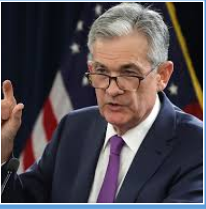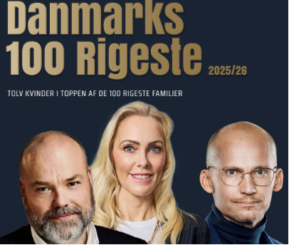Corona-vaccinen giver den amrikanske centralbank tillid til, at det værste i coronakrisen er overstået. Umiddelbart virker det absurd, da smittetallet, hospitalsindlæggelser og dødsfald som følge af virussen sætter rekorder. Der er også udsigt til en forværring af økonomoien i de kommende måneder. Centralbanken mødes i denne uge. Der er ikke indikeret en vilje til nye stimuli, men centralbankmedlemmer har udtrykt sig positivt om en hurtig vending af økonomien. En økonom siger, at vendingen formentlig bliver stærkere end efter finanskrisen. Borgerne har opsamlet en betydelig forbrugskapacitet som følge af krisen, og den kan sætte kraftig gang i økonomien, når vendingen kommer i løbet af det nye år.
Uddrag fra Fidelity/Dow Jones:
Vaccine Boosts Fed Confidence That Worst-Case Outcomes Can Be Avoided
Federal Reserve officials have something new to talk about at their policy meeting this week: good news.
This might sound a little absurd. Covid-19 infections, hospitalizations and deaths are hitting records. States and localities are imposing new restrictions on dining and other activities. Claims for unemployment benefits are rising, and the jobless rate fell in November for the wrong reasons — more workers stopped seeking jobs.
But last week’s emergency authorization by the U.S. Food and Drug Administration of a coronavirus vaccine developed by Pfizer Inc. (PFE) and BioNTech SE (BNTX), plus a second candidate from Moderna Inc. (MRNA) also under review, is a potential economic game-changer because it could reduce uncertainty for households, businesses and policy makers.
“There is a bridge to somewhere now. You’re no longer just putting fingers in a dike that’s about to burst,” said Diane Swonk, chief economist at accounting firm Grant Thornton. “We still have a lot of wounds to dress. But now you can see an end date, and it’s likely to happen in 2021.”
Fed officials face an economic outlook with little precedent. Economic growth is at risk of slowing further in the next few months and then revving up. How to navigate these developments will be the focus of the central bankers’ two- day meeting that concludes Wednesday.
Central-bank policy decisions are guided not just by a baseline forecast but also by how officials weigh the balance of risks: What are the worse-than-expected outcomes? What are the better-than-expected ones? Which are more likely to materialize? And how easy or difficult would it be for policy makers to respond to either?
Since the pandemic hit, the dangers of worse-than-expected outcomes have loomed very large — for example, a re-run of the financial crisis that gripped Wall Street in March. Alternately, the virus could so badly cripple the operation of many leisure, hospitality and entertainment businesses that it delivers a one-two punch to the banking system from business bankruptcies and defaults on commercial-property debt.
Vaccines are a big deal because they increase the likelihood that worst-case scenarios may be avoided.
Pifzer said on Nov. 9 that its vaccine had proven more than 90% effective in protecting people from Covid-19, a much-better-than-anticipated result. The announcement was made days after Fed officials’ November meeting.
“The economy should come bouncing back pretty powerfully in the second half of next year. The Fed should be fairly confident about that. That’s different,” said William Dudley, former president of the New York Fed.
“The risk characterization has improved,” said Chicago Fed President Charles Evans on Dec. 4. “It is possible that things are going to change in a meaningful way earlier next year than I was previously expecting.”
It is now reasonable, for example, to “imagine a circumstance where the vaccine was rolled out by Memorial Day and next summer actually looks pretty promising in terms of travel and things like that,” said Mr. Evans.
The current downturn has been like no other. Forecasters at the Fed and on Wall Street have been surprised by the strength of the rebound in the face of deteriorating public-health conditions.
Elevated personal saving rates, an aggressive response from fiscal and monetary policy, and the noneconomic forces that drove the current downturn suggest there is a “tightly coiled spring of pent-up demand” that could yield “a sharp rebound as broad vaccine distribution is achieved,” said Kristina Hooper, chief global market strategist at Invesco.
“I would expect this recovery to be far more robust and less anemic than what we saw in the global financial crisis,” said Ms. Hooper.
The Fed’s economists already made important changes to their outlook at last month’s meeting. They judged the savings cushion many households had amassed would be enough to maintain overall spending even though political gridlock prompted them to erase previously anticipated federal-aid spending from their forecast.
The Fed slashed its short-term benchmark interest rate to near zero in March and in September officials provided more assurance they will be in no hurry to raise rates. Since June, the Fed also has been buying $120 billion a month in Treasury and mortgage debt to hold down long-term yields.
Some analysts think Fed officials will take a step this week to provide more stimulus by increasing the share of long-term Treasury securities they purchase.
No Fed officials have publicly advocated doing so at this meeting. Instead, in recent remarks, they have focused on the issue of clarifying how long their bond purchases could continue, just as they provided guidance on their rate plans in September. “We need to have an approach that can adapt or change to the economic environment,” said New York Fed President John Williams in a Nov. 24 interview.
Several officials have said they don’t think they need to change the asset-buying program now to deliver more economic stimulus. Vaccines could be an important reason why.
“Monetary policy typically takes a year or two to have its full effect, so you have to be looking ahead through” near-term developments, said Mr. Williams. Fiscal policy is “the most powerful tool” to build the bridge “between now and to maybe when vaccines start to become available and the economy gets on a much stronger path,” he said.
Serious hardship still looms for millions of households, and vaccine delivery is fraught with logistical burdens. Fed officials still have their eyes firmly on dangers of long-term scarring to the economy from extended jobless spells and business failures.
But increased confidence that there is light at the end of the tunnel — and that it isn’t an oncoming train — could improve how hiring and purchasing managers and bank credit officers look ahead to 2021.
For the Fed, that counts as good news.



